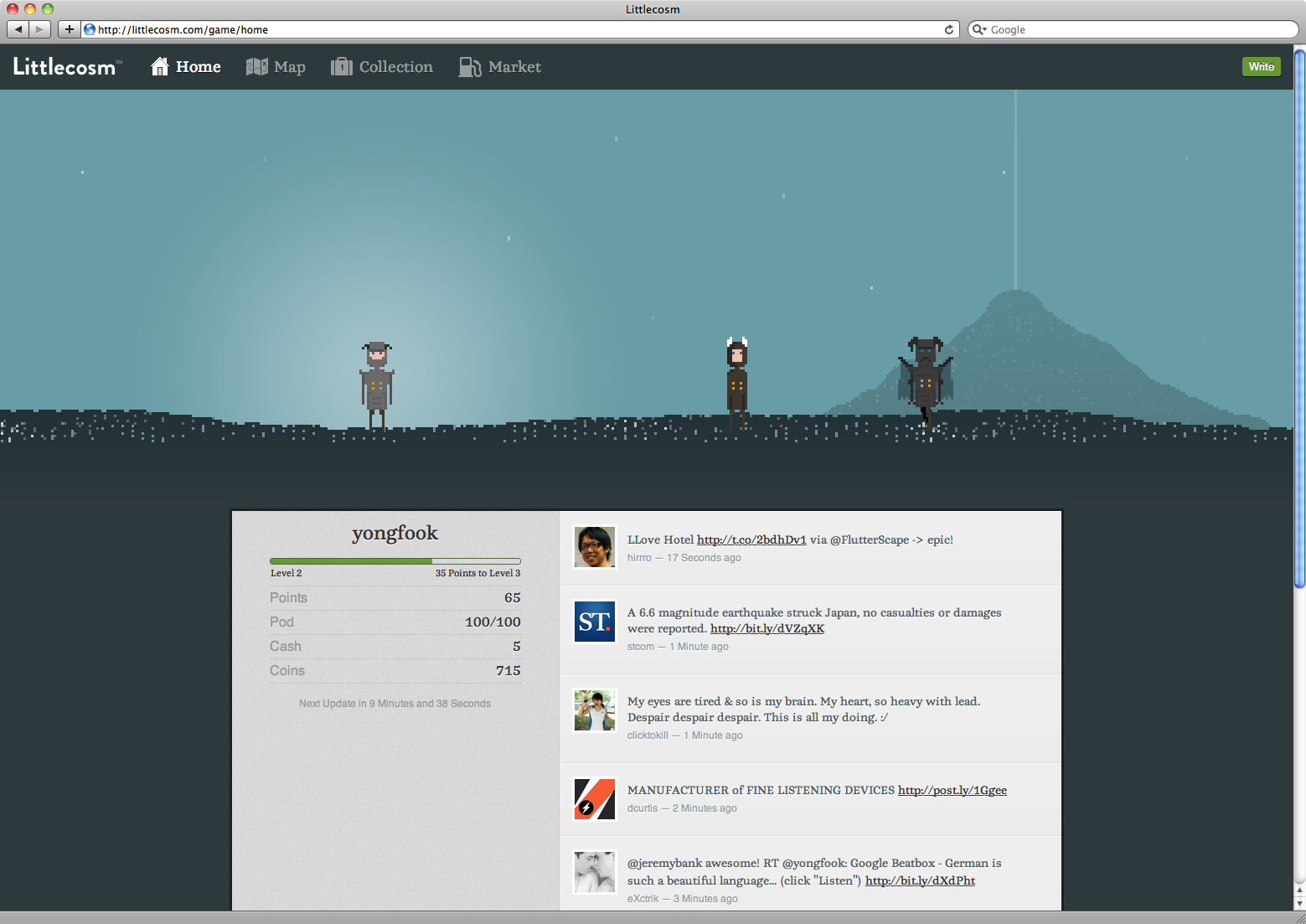
Who doesn't have something to say about the iPad? The sentiment seems to be split down the middle with some shrugging it off as an oversized iPod Touch and others hailing it as the future of computing. (And some just make fun of the name like they did with the Nintendo Wii.) We took some time to analyze the overall sentiment on the web, as well as our own thoughts on the device.
iPad's Positioning

As Steve Jobs began to introduce Apple's newest product line, he described a space between the phone and the laptop where the iPad would rest comfortably (just like your knees). Many people were hoping for an all-in-one laptop replacement. Instead, the iPad is hoping to fill a space not yet satisfied, one that we still might not fully grasp. Because this space is new, many of us fail to imagine it exists, or even that our behavior might change as the iPad evolves.
While obviously lumped into Apple's "mobile offering," it will not replace our most important device -- the phone. Most of the buzzing technologies found in mobile will not have the same effect on the iPad. For example, mobile crowdsourcing will not be possible on the same scale, as the size will prevent us from taking it places our phones go. Same goes for location-based services. Without a camera, augmented reality can be scratched off the list. SMS is a no go and same with phone calls (although Skype is a possibility).
What we see is that Apple has clearly positioned the iPad between a Macbook and an iPhone by both design and marketing. They are creating a device to address needs that we are possibly unaware of, and create ones that still do not exist (Apple is in the business of selling products, after all...).
Where We'll Use It

Size matters. For the iPad, it will play a big part in where and how it will be used. As we mentioned earlier, the 9.7 inch screen means that we will not carry it everywhere we go, like we do a mobile phone. Instead expect to see it used in environments where we have decided to settle for the time being -- the living room, kitchen, park bench, office, Starbucks, subway commute, classroom, airplane, etc. There was a reason Steve Jobs was lounging back in an armchair while presenting the device -- this is how Apple wants you to use it.
How We'll Use It

Keeping these contexts in mind, we can begin to imagine possible utilities or use cases for the iPad. Many of these include applications already on the iPhone that would make more sense with a larger screen i.e., reading, watching video, looking at pictures, surfing the web, and gaming. Looking further we see even more possibilities tied to contextually-affected behaviors. Many people use their laptop while sitting in front of the television; perhaps the iPad could perform as the ideal second screen for the 10-foot experience. Magazines and newspapers can create a more graphical, interactive digital experience than is possible on the Kindle or eReader. Cooks can bring it into the kitchen to read recipes online. Like a Chumby, the iPad could display ambient information and entertainment. It could reside on the coffee table and be used for two-screen interactions and real-time social viewing. Networks and TV should begin considering ancillary content that can be displayed on this device.
Mashable suggests that the iPad is made for consuming content and not creating it, we disagree. Just look at the creation tools for the iPhone -- piano apps, paint pad, remix tools... From Creative Applications:
Some people may be disappointed that it’s ‘basically a big iPhone’, I don’t think they realize the potential for a whole new breed of multitouch applications, and a slew of new usage scenarios. The simple addition of a larger screen (and a faster processor) allows for much deeper applications that just weren’t possible on the iPhone.
It could also be used in the workplace and academic settings for note-taking, email, keep tabs on your calendar, and making presentations. Startups like Inkling have already popped up to provide for iPad-based content creation, powerful educator tools, and a richer learning experience.
Explaining Reaction and Disappointment

Many people are disappointed with what they saw at the unveiling, but British actor Steven Fry reminds us of the initial reaction to the iPhone.
In June 2007 when the iPhone was launched I collected a long list of “not impressed”, “meh”, “big deal”, “style over substance”, “it’s all hype”, “my HTC TyTN can do more”, “what a disappointment”, “majorly underwhelmed” and similar reactions.
He goes on to point to the three billion apps that have been downloaded in two years and labels the iPad as a John the Baptist, preparing for what is to come. Noah Brier's brings his thoughts on bloggers' disappointment:
The disappointment thing is pretty amazing. The specs are pretty much exactly what everyone expected (minus a camera maybe) and yet the response seems to be that this device isn't all that exciting (at least not yet). So what is it? Maybe we just don't get enough real mystery any more ...
Conclusion
Some don't see it in their daily routine, because maybe they really don't need it. Not everyone will. Keeping in mind that this is a first generation device and looking into the future, this is a good first step. Problems that will hopefully be addressed include the inability to multitask, the lack of Flash (which means no Hulu or Amazon video), no camera (there goes video conferencing), and of course the nagging problem of discovery in the App Store.
Like MG Siegler and Steve Jobs noted, "If you have an iPhone, you already know how to use this." Of course, this is just a platform and the real use cases will spring from the applications developed for it. But let's consider today's children who are being handed iPhones instead of pacifiers. They are growing up with a touchscreen interface -- no mouse and no keyboard. Will this be the computer of their future?















